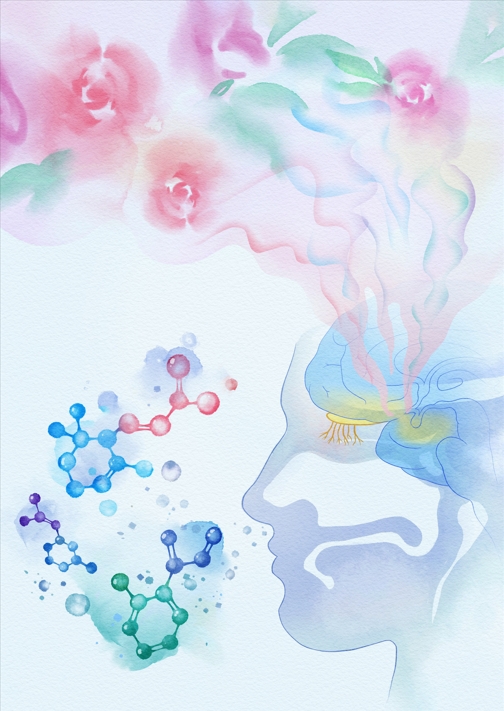
Scents, such as coffee, flowers, or freshly-baked pumpkin pie, are created by odor molecules released by various substances and detected by our noses. In essence, we are smelling molecules, the basic unit of a substance that retains its physical and chemical properties.
A research team led by Dr. ZHOU Wen from the Institute of Psychology of the Chinese Academy of Sciences has discovered that this process of "smelling" involves an analysis of submolecular structural features.
The study was published online in Nature Human Behaviour on March 18.
In this study, the researchers perturbed the processing of submolecular features by exploiting adaptation –– a fundamental mechanism by which specific neuronal responses decay after repetitive or prolonged stimulation. They also exploited the substructure-superstructure relationships among selected compounds.
Systematic behavioral assessments of over 400 participants revealed a breakdown in the unified "smell" of a compound following substructure adaptation. The compound began to smell more like a different compound representing its unadapted part. Importantly, this change occurred independently of olfactory perceptual attributes such as intensity and pleasantness.
Further comparisons of the strengths and patterns of odor-induced brain responses before and after substructure adaptation indicate that activities in the anterior piriform cortex and amygdala carry local structural information. These olfactory regions project to the posterior piriform cortex, which is known to represent what something smells like through ensemble coding. In the posterior piriform cortex, substructure adaptation makes the response pattern to a compound more similar to the response to the unadapted part of the compound (as opposed to the adapted part), thus paralleling the behavioral observations.
The results shed new light on the neural computation underlying formation of an odor. They establish a direct correspondence between the coding of submolecular chemical features and what we smell, and demonstrate that the perceptual and neural representations of an odorous substance are not invariant but can be dynamically modified by recent olfactory encounters.
The odors we experience are thus manifestations of continuous analysis and synthesis in the olfactory system, breath by breath, of the structural features and relationships of volatile compounds in our ever-changing chemical environment, according to the researchers.
This study was supported by the STI2030-Major Projects, the Chinese Academy of Sciences, and the National Natural Science Foundation of China.

Exemplar compounds used in the study. Cyclotene propionate (Comp.CP) is structurally a composite of methyl propionate (P) and methylcyclopentenone (C). (Image by ZHOU Wen)

Scents are produced by odor molecules detected by our olfactory system. Through a series of behavioral and brain imaging experiments, YE et al. demonstrate that the process of "smelling" involves an analysis of submolecular structural features, which takes place in the piriform cortex and its associated regions. (Image by ZHOU Wen)

86-10-68597521 (day)
86-10-68597289 (night)

86-10-68511095 (day)
86-10-68512458 (night)

cas_en@cas.cn

52 Sanlihe Rd., Xicheng District,
Beijing, China (100864)

